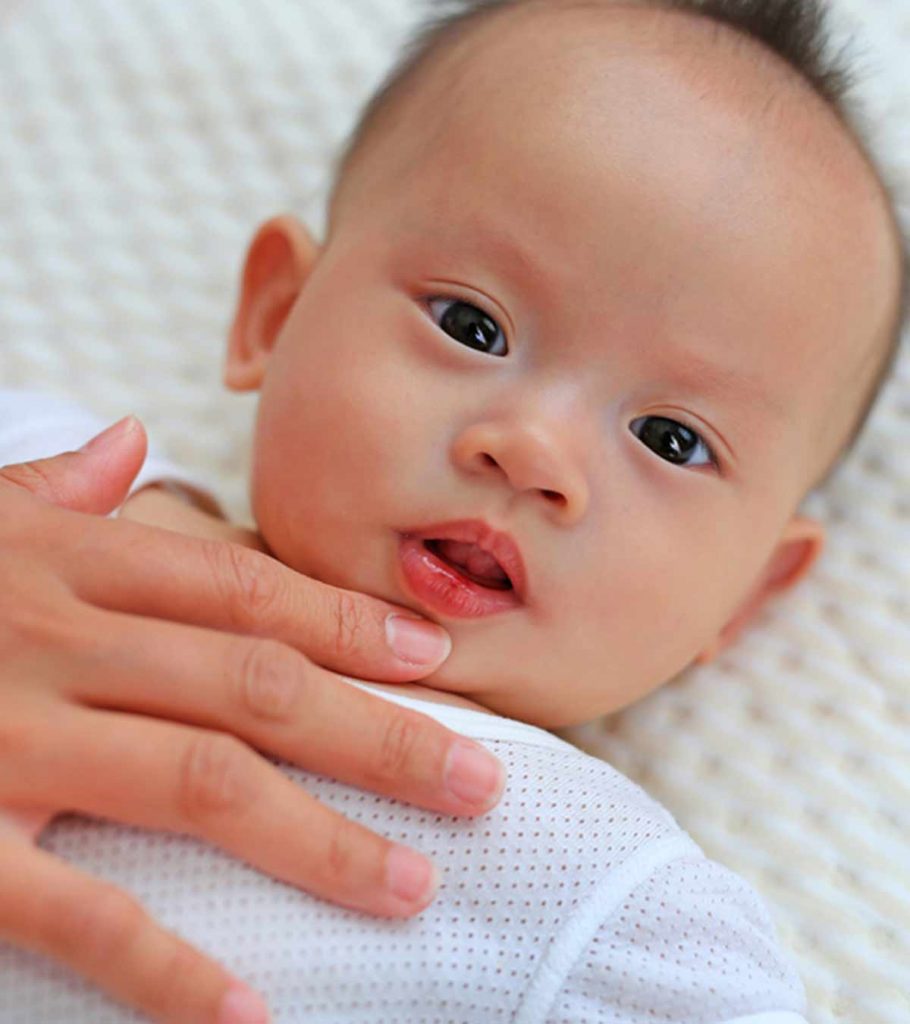Baby lip blisters are common and usually resolve on their own. They are characterized by minute fluid-filled bumps on the baby’s lips and may not be visible when the lips are closed. Although a baby lip blister does not pose a threat, it is usually a subtle sign of latching problems. Identifying the underlying reason behind the baby’s lip blisters might help your doctor treat them and prevent them from recurring.
Read this post to know more about what these blisters look like and their causes and management.
How Do Baby Lip Blisters Look Like?
Baby lip blisters look like small bubbles on the skin of your baby’s lips and may not be visible when the lips are closed. They generally appear as tiny bubbles on the cupid’s bow or as a big band stretched across the lips. They are usually filled with a clear fluid. In some rare cases, they may also be filled with pus.
Why Do Babies Get Lip Blisters?
Baby lip blisters can be due to sucking during breastfeeding or due to cold sores.
1. Baby suck lip/ blisters
Lip blisters caused by sucking are also known as suck blisters, friction blisters, or suck callouses. A newborn’s lips are tender and soft. While breastfeeding, the baby starts to suck vigorously and overworks their lip muscles. These lead to friction and may cause lip blisters (1). Although lip blisters are mostly seen in breastfeeding babies, they are also present in bottle-fed babies.
A case study showed that sucking blisters may also develop during the intrauterine life as babies start the sucking action when they are still in the womb (2).
Newborn lip blisters may resolve in one or two days, and you need not worry or do something about them. However, if the lip blisters persist beyond a couple of weeks, it could signal a latching problem (3).
Also, a tongue-tie or a lip-tie may prevent your baby from raising their tongue and restrict the lips’ movement, resulting in long-lasting sucking blisters. If your baby is premature, they might also need more time to learn how to latchiXAttachment of the infant with the mother’s breast during breastfeeding correctly (4).
2. Cold sores
According to a study conducted by multiple institutions, it was estimated that the neonatal herpes simplex virus (HSV) infection incidence rate ranges between one in 3000 to one in 20,000 live births. Cold sores caused by the herpes simplex virusi can cause blisters on the baby’s lips. Unlike the suck blisters, they might be painful and filled with pus. Although these are found primarily in adults, babies under eight weeks are at risk of developing them, as their immune system is not fully developed (5).
Adults with the virus can infect the baby when they touch the baby’s lips or kiss them, or give them a pacifier after keeping it in their mouth.
Babies may also develop a fever when they have a cold sore for the first time, and the mouth area could be inflamed, leading to bad breath (5).
How To Treat Baby Lip Blisters
The treatment for lip blisters in babies depends on the cause. If the blisters are due to sucking, then observe them for three to four days. If they reappear or do not go away on their own, identify and fix the latching problem. Here is how you can do it.
- Gently rub your nipple on your baby’s lips. This may help your baby open their mouth wide.
- Try to direct the nipple above your baby’s top lip. Also, make sure your baby’s chin is towards their chest.
- Now, aim your baby’s lower lip away from the base of your nipple. Lead your baby into the breast, chin first, and then make them latch on.
- An extended tongue and the baby’s mouth filled with your breast with the baby’s lower lip everted, are signs of a good latch (6).
If your bottle-fed baby has suck blisters, check your feeding position, place the bottle nipple completely into your baby’s mouth, or use a paced feeding bottle until your baby becomes comfortable latching.
You may apply a warm compress on your baby’s lips to soothe the milk blisters (7).
Cold sores resolve on their own, but if your baby develops a fever or if their mouth appears inflamed, then take them to your pediatrician.
You can prevent cold sores in babies by taking the following precautions.
- Do not let family members who are infected touch or kiss the baby.
- Always wash your hands before touching the baby or their bottles and pacifiers.
- Do not share your baby’s towels or bedsheets with people who are infected.
Baby lip blisters may not be obvious since they occur in the inner part of the lips. However, they are quite common and usually resolve on their own. The friction caused by sucking during breastfeeding and cold sores are the common causes of lip blisters in babies. If the blisters are accompanied by fever, consult your pediatrician since these blisters could be due to an infection. On the other hand, improve the latching technique if the blister is due to sucking while feeding. Regardless of the cause, lip blisters are common in babies and are not a cause of concern unless accompanied by other signs of infection.
Key Pointers
- Lip blisters in newborns can appear as tiny bubbles, or a large band stretched over the baby’s lips.
- Cold sores or sucking can cause lip blisters in babies.
- Lip blisters are more common in breastfed babies, although they can also occur in bottle-fed babies.
- Proper latching positions and techniques can help newborns with sucking blisters.
- Always wash the baby’s bottles, pacifiers, and your hands before touching a newborn.
Does your baby have lip blisters? Learn how to identify and treat them in this informative video. Get the answers you need to keep your baby safe and healthy.













